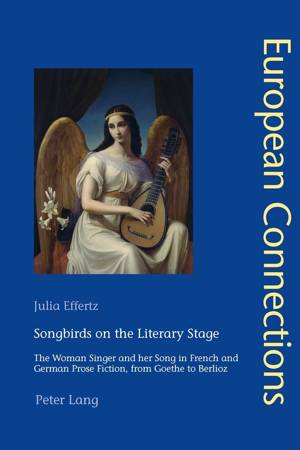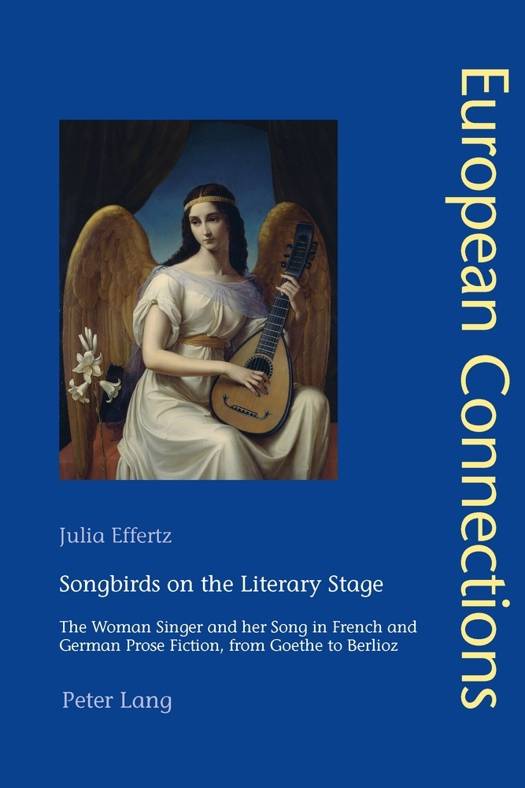
- Afhalen na 1 uur in een winkel met voorraad
- Gratis thuislevering in België vanaf € 30
- Ruim aanbod met 7 miljoen producten
- Afhalen na 1 uur in een winkel met voorraad
- Gratis thuislevering in België vanaf € 30
- Ruim aanbod met 7 miljoen producten
Zoeken
Songbirds on the Literary Stage
The Woman Singer and Her Song in French and German Prose Fiction, from Goethe to Berlioz
Julia Effertz
€ 166,95
+ 333 punten
Omschrijving
This interdisciplinary study, situated at the cross-section of music, literature and gender, examines the woman singer and her song as a literary motif in French and German prose fiction from the 1790s to the mid-nineteenth century. Through selected case studies, this diachronic history of motifs offers a fresh perspective on canonical singer archetypes, such as Goethe's child singer Mignon and Madame de Staël's ground-breaking artist Corinne. The volume also examines lesser known narratives by authors including Caroline Auguste Fischer, E.T.A. Hoffmann, Hector Berlioz and Marceline Desbordes-Valmore, some of which have not been considered critically in this regard before. This allows for a re-evaluation of the significance of the singer motif in musical narratives from the Romantic era to the July Monarchy. The sometimes polemic, often ambivalent, yet always nuanced and multi-layered reflection on the woman singer in literature bears testimony to the complexity of the nineteenth-century musical-literary discourse and its fluid negotiation of gender relations and female performance, fitting well with that ineffable, enigmatic essence of the woman singer herself who, as a literary motif and a cultural icon, continues to resonate and fascinate well beyond the nineteenth century.
Specificaties
Betrokkenen
- Auteur(s):
- Uitgeverij:
Inhoud
- Aantal bladzijden:
- 292
- Taal:
- Engels
- Reeks:
- Reeksnummer:
- nr. 38
Eigenschappen
- Productcode (EAN):
- 9783034307345
- Verschijningsdatum:
- 17/09/2015
- Uitvoering:
- Paperback
- Formaat:
- Trade paperback (VS)
- Afmetingen:
- 150 mm x 224 mm
- Gewicht:
- 385 g

Alleen bij Standaard Boekhandel
+ 333 punten op je klantenkaart van Standaard Boekhandel
Beoordelingen
We publiceren alleen reviews die voldoen aan de voorwaarden voor reviews. Bekijk onze voorwaarden voor reviews.








